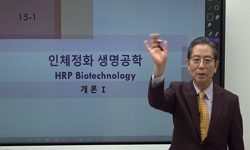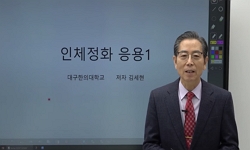Objectives : Rhamnolipid for the remediation of heavy metals in deep-sea mining tailings originated from manganese nodules was mainly focused in this research. As continued development depletes land-based metal resources, deep-sea natural resources su...
http://chineseinput.net/에서 pinyin(병음)방식으로 중국어를 변환할 수 있습니다.
변환된 중국어를 복사하여 사용하시면 됩니다.
- 中文 을 입력하시려면 zhongwen을 입력하시고 space를누르시면됩니다.
- 北京 을 입력하시려면 beijing을 입력하시고 space를 누르시면 됩니다.

생물계면활성제 람노리피드를 이용한 심해저 광업 잔재물 내 중금속 정화 = Remediation of Heavy Metals in Deep-sea Mining Tailings by Using Rhamnolipid
한글로보기https://www.riss.kr/link?id=A106406329
- 저자
- 발행기관
- 학술지명
- 권호사항
-
발행연도
2019
-
작성언어
Korean
-
주제어
Deep-sea Mining Tailings ; Biosurfactants ; Rhamnolipids ; Heavy Metals ; Remediation ; 심해저 광업 잔재물 ; 생물계면활성제 ; 람노리피드 ; 중금속 ; 정화
-
등재정보
KCI등재
-
자료형태
학술저널
- 발행기관 URL
-
수록면
524-531(8쪽)
-
KCI 피인용횟수
0
- DOI식별코드
- 제공처
-
0
상세조회 -
0
다운로드
부가정보
다국어 초록 (Multilingual Abstract)
Methods : Sample (20-63 μm, manganese nodules) made of 2% (w/v) liquid using ultrapure water were stirred and mixed with a rhamnolipid solution (0.05%, 0.1%, 0.2%, 0.3%) for various elapsed time, to evaluate the possibility of remediation of heavy metals in deep-sea mining tailings using rhamnolipid. Each mixture was analyzed for heavy metals eluted into the liquid after solid-liquid separation.
Results and Discussion : Rhamnolipid was effective in removal of heavy metals and environmentally friendly. The extracted concentration of copper (Cu), zinc (Zn), nickel (Ni), and cadmium (Cd) were correspondingly enhanced with specific elapsed time and rhamnolipid’s concentrations, also.
Conclusions : The results of this research should be used as basic data for the actual development of the remediation technology for deep-sea mining tailings using rhamnolipid in the future.
Objectives : Rhamnolipid for the remediation of heavy metals in deep-sea mining tailings originated from manganese nodules was mainly focused in this research. As continued development depletes land-based metal resources, deep-sea natural resources such as manganese nodules collected from the Clarion-Clipperton Fracture Zone in the Pacific Ocean are inevitably drawing attention as useful alternative resources. The London protocol 1996 (LP) under International Maritime Organization (IMO) and the International Sea-bed Authority (ISA), however, will come up with the environmental guidelines of deep-sea mining tailings by early 2020s. Accordingly, there are urgently required to develop technologies that remediate heavy metals of deep-sea mining tailings. In this research, rhamnolipids which were known as biosurfactants was used to extracting agent for heavy metals in deep-sea mining tailings.
Methods : Sample (20-63 μm, manganese nodules) made of 2% (w/v) liquid using ultrapure water were stirred and mixed with a rhamnolipid solution (0.05%, 0.1%, 0.2%, 0.3%) for various elapsed time, to evaluate the possibility of remediation of heavy metals in deep-sea mining tailings using rhamnolipid. Each mixture was analyzed for heavy metals eluted into the liquid after solid-liquid separation.
Results and Discussion : Rhamnolipid was effective in removal of heavy metals and environmentally friendly. The extracted concentration of copper (Cu), zinc (Zn), nickel (Ni), and cadmium (Cd) were correspondingly enhanced with specific elapsed time and rhamnolipid’s concentrations, also.
Conclusions : The results of this research should be used as basic data for the actual development of the remediation technology for deep-sea mining tailings using rhamnolipid in the future.
국문 초록 (Abstract)
방법 : Rhamnolipid를 이용한 심해저 광물자원 내 중금속 정화 가능성을 평가하기 위하여, 초순수를 사용하여 2% (w/v)의 액상으로 만든 시료(20-63 μm, 망간 단괴)와 rhamnolipid용액(0.05%, 0.1%, 0.2%, 0.3% (w/v))을 다양한 경과시간 동안 교반・혼합하였다. 각각의 혼합물은 고상과 액상을 분리하여 액상에 용출된 중금속을 분석하였다.
결과 및 토의 : 연구 결과, 우선 처리대상물질로 선정한 구리, 아연, 니켈, 카드뮴에 대하여 용출된 중금속의 농도는경과시간 및 rhamnolipid 농도에 비례하여 증가하는 경향을 보였다.
결론 : 다양한 처리 조건에서 시료의 용출 특성을 기초로, 향후 rhamnolipid를 이용한 실제 심해저 광업 잔재물 정화 기술 개발을 위한 기초 자료로써 활용될 것이다.
목적 : 본 연구는 생물계면활성제인 람노리피드(rhamnolipid)를 이용한 세척 처리에 의한 심해저 광업 잔재물 내중금속 정화 가능성을 평가하였다. 급격한 개발로 육상의 금속자원이 고갈됨에 ...
목적 : 본 연구는 생물계면활성제인 람노리피드(rhamnolipid)를 이용한 세척 처리에 의한 심해저 광업 잔재물 내중금속 정화 가능성을 평가하였다. 급격한 개발로 육상의 금속자원이 고갈됨에 따라, 대체자원으로 태평양의 클라리온-클립톤 구역(The Clarion-Clipperton Fracture Zone)의 망간 단괴 등 심해저 광물자원이 주목받고 있다. 하지만 국제해사기구(IMO) 산하 런던의정서(London Protocol 1996; LP)가 국제해저기구(ISA)와 심해저 광물자원 개발을위한 국제환경기준안을 2020년 초까지 수립할 예정이기 때문에, 심해저 광물자원 개발 시 발생하는 잔재물에 대한 정화(Remediation) 기술 또한 개발이 시급하다. Rhamnolipid는 생분해성을 가지는 친환경 생물계면활성제로, 토양 및 광산폐수에서 중금속 제거 효과를 입증한 바 있다. 본 연구에서는 rhamnolipid를 이용하여 심해저 광물자원내 중금속 정화 가능성을 평가하고, 경과시간 및 rhamnolipid 농도에 따른 다양한 조건에서의 중금속 용출 특성을평가하였다.
방법 : Rhamnolipid를 이용한 심해저 광물자원 내 중금속 정화 가능성을 평가하기 위하여, 초순수를 사용하여 2% (w/v)의 액상으로 만든 시료(20-63 μm, 망간 단괴)와 rhamnolipid용액(0.05%, 0.1%, 0.2%, 0.3% (w/v))을 다양한 경과시간 동안 교반・혼합하였다. 각각의 혼합물은 고상과 액상을 분리하여 액상에 용출된 중금속을 분석하였다.
결과 및 토의 : 연구 결과, 우선 처리대상물질로 선정한 구리, 아연, 니켈, 카드뮴에 대하여 용출된 중금속의 농도는경과시간 및 rhamnolipid 농도에 비례하여 증가하는 경향을 보였다.
결론 : 다양한 처리 조건에서 시료의 용출 특성을 기초로, 향후 rhamnolipid를 이용한 실제 심해저 광업 잔재물 정화 기술 개발을 위한 기초 자료로써 활용될 것이다.
참고문헌 (Reference)
1 강구, "중금속 흡착을 위한 원위치 피복소재로서 천연제올라이트의 양이온교환용량에 따른 적용성 평가" 대한환경공학회 39 (39): 51-58, 2017
2 지상범, "심해저 망간단괴 개발의 현황과 미래" 한국해양과학기술원 36 (36): 367-371, 2014
3 이풀잎, "수산화칼슘과 황산제일철을 이용한 중금속 오염토양의 고화제 개질" 대한환경공학회 40 (40): 320-325, 2018
4 X. Mao, "Use of surfactants for the remediation of contaminated soils: A review" 285 : 419-435, 2015
5 E. Ramirez-Llodra, "Submarine and deep-sea mine tailing placements : A review of current practices, environmental issues, natural analogs and knowledge gaps in Norway and internationally" 97 (97): 13-35, 2015
6 M. Lodge, "Seabed mining: international seabed authority environmental management plan for the Clarion-Clipperton Zone. A partnership approach" 49 : 66-72, 2014
7 S. Wang, "Rhamnolipid biosurfactant-enhanced soil flushing for the removal of arsenic and heavy metals from mine tailings" 44 (44): 296-301, 2009
8 K. Bostrom, "Marine Mineral Exploration" Elsevier Science 2-55, 1986
9 "ISBA/23/LTC/CRP.3. Regulation on exploitation of mineral resources in the area"
10 W. Chen, "Heavy metal (Cu, Cd, Pb, Cr) washing from river sediment using biosurfactant rhamnolipid" 24 (24): 16344-16350, 2017
1 강구, "중금속 흡착을 위한 원위치 피복소재로서 천연제올라이트의 양이온교환용량에 따른 적용성 평가" 대한환경공학회 39 (39): 51-58, 2017
2 지상범, "심해저 망간단괴 개발의 현황과 미래" 한국해양과학기술원 36 (36): 367-371, 2014
3 이풀잎, "수산화칼슘과 황산제일철을 이용한 중금속 오염토양의 고화제 개질" 대한환경공학회 40 (40): 320-325, 2018
4 X. Mao, "Use of surfactants for the remediation of contaminated soils: A review" 285 : 419-435, 2015
5 E. Ramirez-Llodra, "Submarine and deep-sea mine tailing placements : A review of current practices, environmental issues, natural analogs and knowledge gaps in Norway and internationally" 97 (97): 13-35, 2015
6 M. Lodge, "Seabed mining: international seabed authority environmental management plan for the Clarion-Clipperton Zone. A partnership approach" 49 : 66-72, 2014
7 S. Wang, "Rhamnolipid biosurfactant-enhanced soil flushing for the removal of arsenic and heavy metals from mine tailings" 44 (44): 296-301, 2009
8 K. Bostrom, "Marine Mineral Exploration" Elsevier Science 2-55, 1986
9 "ISBA/23/LTC/CRP.3. Regulation on exploitation of mineral resources in the area"
10 W. Chen, "Heavy metal (Cu, Cd, Pb, Cr) washing from river sediment using biosurfactant rhamnolipid" 24 (24): 16344-16350, 2017
11 L. D. Palma, "Environmental effects of using chelating agents in polluted sediment remediation" 94 (94): 340-344, 2015
12 C. N. Mulligan, "Environmental applications for biosurfactants" 133 (133): 183-198, 2005
13 Gholamreza Asadollahfardi, "Electrokinetic remediation of diesel-contaminated silty sand under continuous and periodic voltage application" 대한환경공학회 24 (24): 456-462, 2019
14 B. Dahrazma, "Effects of additives on the structure of rhamnolipid (biosurfactant): A small-angle neutron scattering (SANS) study" 319 : 590-593, 2008
15 G. Liu, "Advances in applications of rhamnolipids biosurfactant in environmental remediation: A review" 115 (115): 796-814, 2018
동일학술지(권/호) 다른 논문
-
- 대한환경공학회
- 문예은
- 2019
- KCI등재
-
- 대한환경공학회
- 권병수
- 2019
- KCI등재
-
고체상추출법과 GC/MS를 이용한 수질 환경 시료 중 아크릴아마이드 분석방법 연구
- 대한환경공학회
- 유대영
- 2019
- KCI등재
-
전산화 공정에 의한 microcystin 용출 및 고도처리에 의한 제거 특성
- 대한환경공학회
- 염훈식
- 2019
- KCI등재
분석정보
인용정보 인용지수 설명보기
학술지 이력
| 연월일 | 이력구분 | 이력상세 | 등재구분 |
|---|---|---|---|
| 2027 | 평가예정 | 재인증평가 신청대상 (재인증) | |
| 2021-01-01 | 평가 | 등재학술지 유지 (재인증) |  |
| 2018-01-01 | 평가 | 등재학술지 선정 (계속평가) |  |
| 2017-12-01 | 평가 | 등재후보로 하락 (계속평가) |  |
| 2013-01-01 | 평가 | 등재 1차 FAIL (등재유지) |  |
| 2010-01-01 | 평가 | 등재학술지 유지 (등재유지) |  |
| 2008-01-01 | 평가 | 등재학술지 유지 (등재유지) |  |
| 2006-01-01 | 평가 | 등재학술지 유지 (등재유지) |  |
| 2004-01-01 | 평가 | 등재학술지 유지 (등재유지) |  |
| 2001-01-01 | 평가 | 등재학술지 선정 (등재후보2차) |  |
| 1998-07-01 | 평가 | 등재후보학술지 선정 (신규평가) |  |
학술지 인용정보
| 기준연도 | WOS-KCI 통합IF(2년) | KCIF(2년) | KCIF(3년) |
|---|---|---|---|
| 2016 | 0.52 | 0.52 | 0.45 |
| KCIF(4년) | KCIF(5년) | 중심성지수(3년) | 즉시성지수 |
| 0.43 | 0.42 | 0.604 | 0.13 |




 DBpia
DBpia






